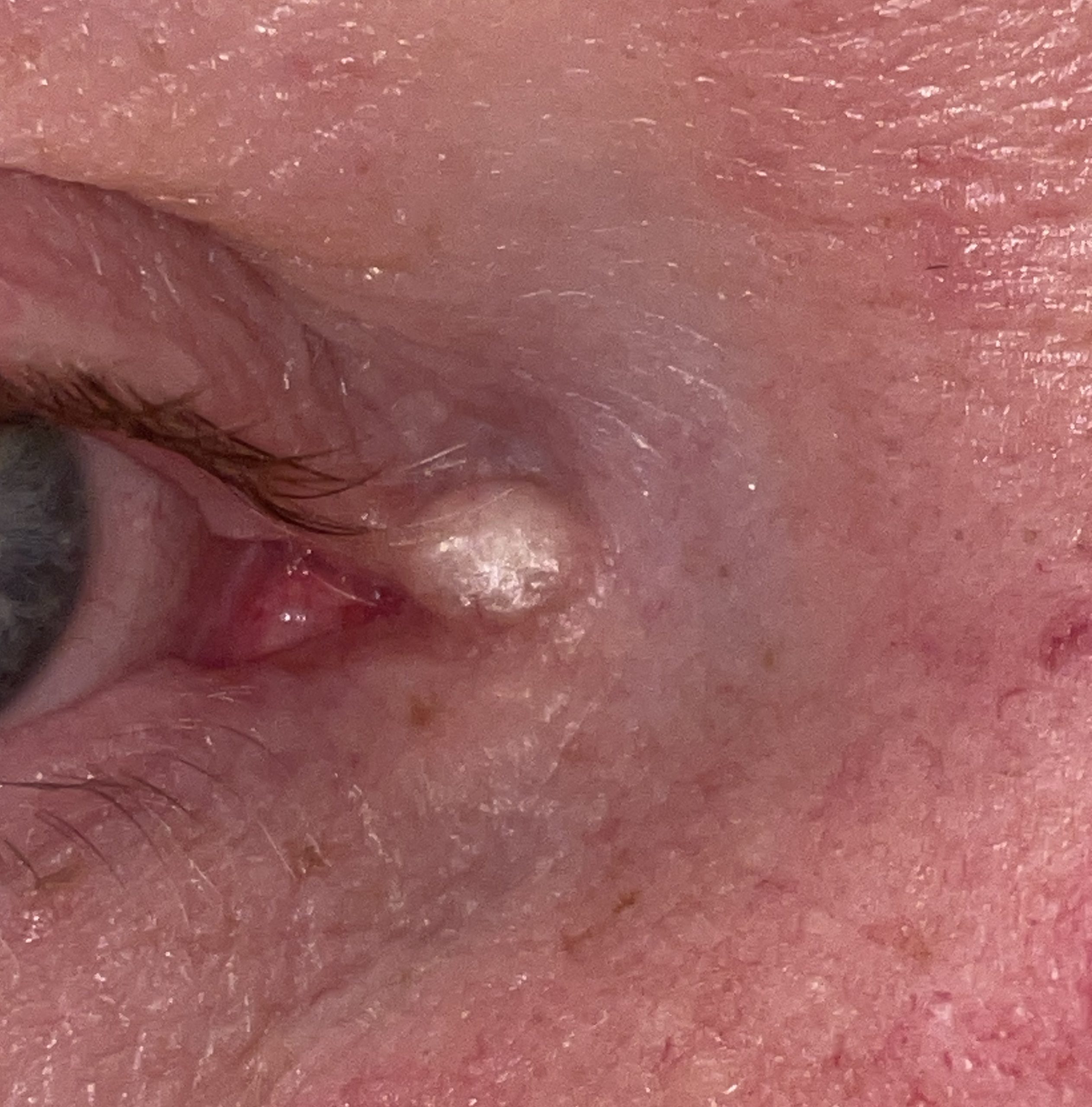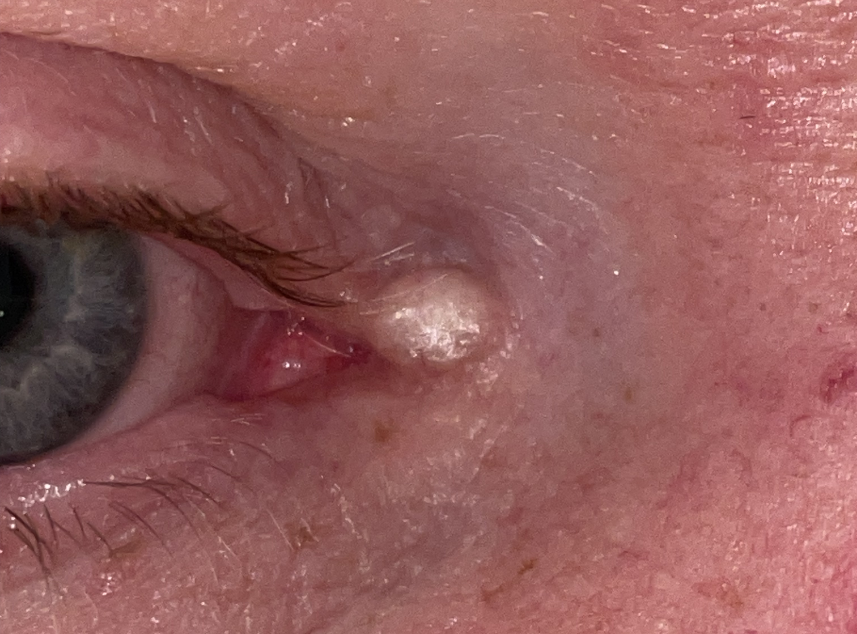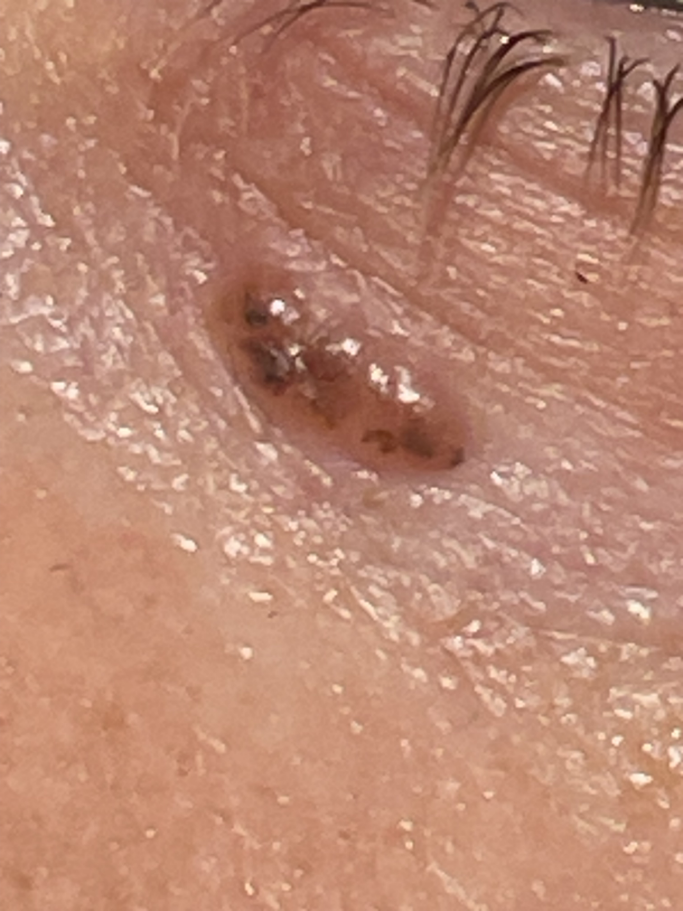
Eyelid Lumps and Bumps
Consultant-led treatment from Mr Hooman Sherafat, with precision care and personal support at every step.
Book a Consultation Scroll to learn more

Overview
Treatment at The London Eye Clinic
Lesion of eyelids are very common and arise for a variety of causes. On occasions these lesions may be removed either because of concerns about their nature or a patient’s wish to do so, due to their concerns about appearance of their eyelid.
Symptoms
Reasons you may seek excision or excision may be recommended:
- Concerns about nature of the lesion
- Symptoms such as impact on vision, irritation or discomfort
- Concerns about appearance

About
About Excision
What is Excision and lesion of eyelids?
Lesion of eyelids are very common and arise for a variety of causes. On occasions these lesions may be removed either because of concerns about their nature or a patient’s wish to do so, due to their concerns about appearance of their eyelid.
In some cases, the lesion may not be fully removed but a small part of it removed (biopsy) and sent off for histological (lab) testing, so that the appropriate treatment is administered, once its exact nature is determined.

Treatment
Information on the procedure
The treatment is carried out in a dedicated outpatient minor-ops room, A local anaesthetic injection is given to the affected area and the lesion is removed. Most commonly the area does not need to be stitched and is allowed to heal itself, but on occasions stitches may be needed to close the defect. Depending on the features of the lesion, it may be recommended that it is checked histologically i.e. sent to the lab, so its precise nature is identified.
When the procedure is completed, your eye may be padded. If your eye is padded it would advisable that you do not drive.
What are the risks of excision?
Removal of lesions of eyelid are generally safe and low risk and do not lead to any long-term sequelae, however there is always a risk. Some of the risks are the same as those applying to an of any procedure on any part of the body. Some risks are specific to the particular area of the eyelid, where the lesion presents.
General risks:
Infection, bleeding, bruising & swelling, scarring, incomplete excision, recurrence, further surgery depending on the histology results.
Specific risks:
- Lid margin lesions: Removal of lesions involving the eyelid margin and eyelashes, may result in loss of some lashes or their growing back in a different direction. Usually lost eyelashes grow back, but on occasions this may be permanent.
- Lesions close to the tear drainage opening: Removal of lesions near the tear drainage opening (puncta), may lead damage to the tear drainage or a change in its position and lead to watery eye.
What to expect post-operatively
The treated eyelid maybe swollen, red & bruised. The eye may be a bit red, gritty or watery. These symptoms are usually transient and shouldn’t last more than a day or two. Bruising from the procedure or injection of anaesthetic may take a longer to clear. The treated area may be left to form a scab and heal. You are advised to keep the area to be kept dry for the rest of the day, until a dry, crusted scab is formed. Once the scab is formed, you can wet and wash the area as usual, but not soak it for prolonged periods. You are encouraged not to pick the scab and remove it, but to allow it to drop off spontaneously. This would favour the best healing of the underlying wound.

Patient Journey
What you can expect under our care

Consultation & Examination
The operation is usually performed under a local anaesthetic that is injected in your eyelid as a daycase.
Your Procedure
After an injection of local anaesthetic, the lesion is excised, drained or curetted (scraped).
Recovery & Follow-up
The treated eyelid maybe swollen, red & bruised. The eye may be a bit red, gritty or watery. These symptoms are usually transient and shouldn’t last more than a day or two.
Frequently Asked Questions
Common questions we are asked
Got a question that’s not covered here?
Just get in touch with our friendly team we’re happy to help and always here to talk through your options.
Contact usUsually yes; occasionally there are reasons this may not be offered on the day. These include the procedure, is not suitable for the outpatient minor-ops room or the minor ops room is not available. If you are interested in having your treatment on the day, it would be helpful if you would contact Mr Sherafat’s PA. It would be preferable not to drive on the day.
You do not usually need to discontinue any medication. It would be helpful if you do not wear make up on the day. Depending on the location and size of the lesion, it would be advisable not to plan any important social engagements for the following 7 days.
Your eye would probably be padded for about two hours after the procedure, so you would be advised not to drive during that period.
Simply visit our contact page and use any of the methods on that page to contact us to get a consultation booked in at a time and location to suit you.
Ready to book a consultation?
Whether you’re looking for more information or want to take the next step, our friendly team is here to help and happy to talk things through with you.
Contact us
"*" indicates required fields
Why Choose Us
Reasons Our Patients Trust Us with their eyes.
Our patients know that they are cared for and listened to. We take the time to provide clear information about all available options, along with the benefits and risks of each. This approach gives every patient the confidence to make informed choices about their treatment, knowing they are supported every step of the way.
Putting the patient first
At The London Eye Clinic, patient care is at the heart of everything we do. Hooman is known for his caring, transparent approach, taking the time to understand each person’s individual needs and creating treatment plans that are compassionate, thorough, and patient-centred . From leading the Best Interest Ophthalmology Service for patients with learning difficulties to offering clear guidance on surgical and non-surgical options, his focus is always on doing what’s right for the patient.
Advanced eye care treatment
With extensive training at leading London hospitals, including St George’s, Guy’s and St Thomas’, and Moorfields. Hooman brings advanced expertise in oculoplastic, lacrimal, and reconstructive surgery alongside general ophthalmology. The London Eye Clinic offers a wide range of treatments, from cataract operations to delicate eyelid procedures, delivered with the latest techniques and the highest standards of care. Whether routine or complex, every treatment is carried out with precision and attention to detail.
Over 20 years of experience
Since qualifying in 1992, Hooman has gained over two decades of experience treating thousands of patients. His work is recognised not only in the UK but also internationally, performing cataract operations in Ghana, Bangladesh, and Burma, and being invited to the House of Lords in recognition of his support for the visually impaired. This depth of experience gives patients confidence that they are in safe, capable hands.

Testimonials
What Are Patients Saying?
Real stories from patients who trusted their eyes to Hooman Sherafat.
